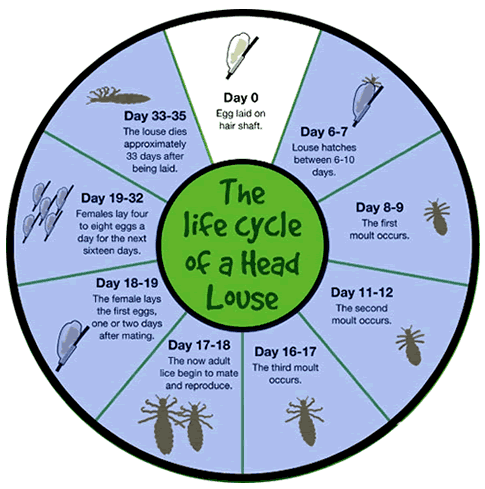The best way to beat a case of head lice is to understand the life cycle so that you can stop them from reproducing.
Get the timing right:
Follow-up after your first combout is always necessary because there are two times in the lifecycle when the nit and louse are microscopic. Giving them some time to develop helps you to remove them before they can reproduce. With a low infestation (under 200 nits and under 50 live lice), follow the wet-combing method of removal every 5-6 days until you get a ‘clear’ comb-out. With a moderate infestation (200-500 nits and over 50 live lice), follow the wet-combing method of removal every 4-5 days until you get a ‘clear’ comb-out. With a high infestation (over 500 nits and 100 live lice), follow the wet-combing method of removal every 3 days until you have a ‘clear’ comb-out.
In every case, after getting you first’clear’ comb-out, do another in 7-10 days to ensure you were successful.
The Three Stages of the Life Cycle:
- The nit (egg) is laid on the hair shaft. At first it is microscopic, but it enlarges and becomes tan in colour over 6-9 days.
- The nymph hatches from the egg and immediately begins to feed on blood. It is initially microscopic, but enlarges and becomes darker in colour as it ingests blood. Over 7-10 days, it gradually gets larger, moulting three times.
- The third time the louse moults it emerges as an adult and is capable of reproduction. It is also more able to transmit to others. The louse continues to live on the head for another 14-16 days. The fertilized female lays 8-10 eggs per day.

